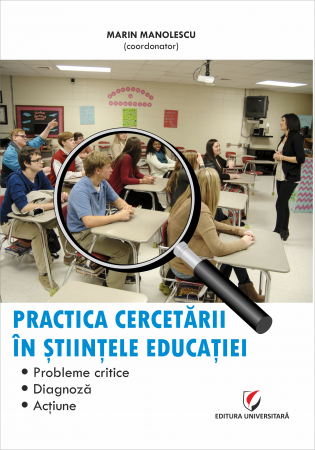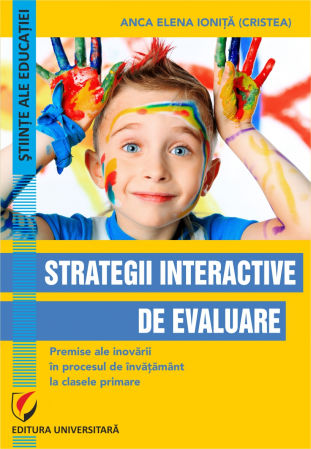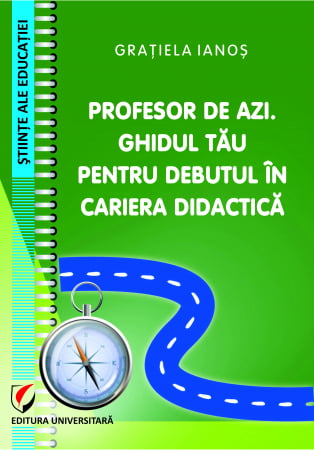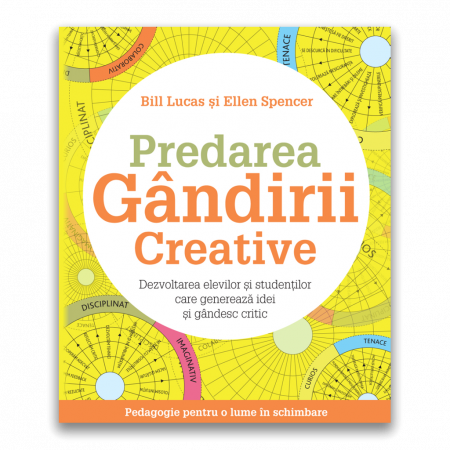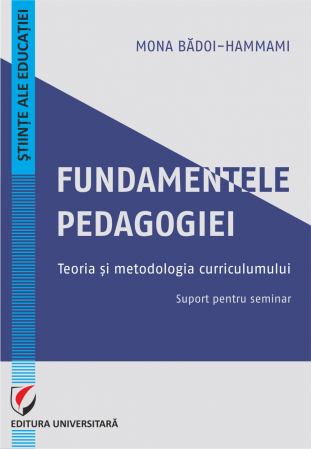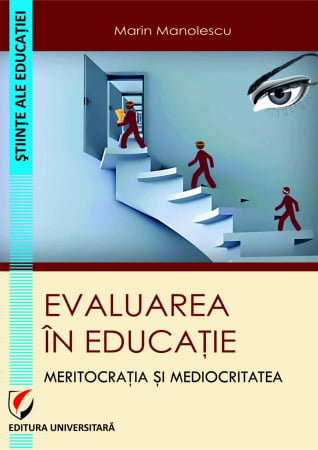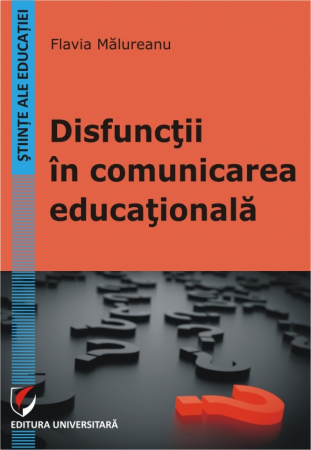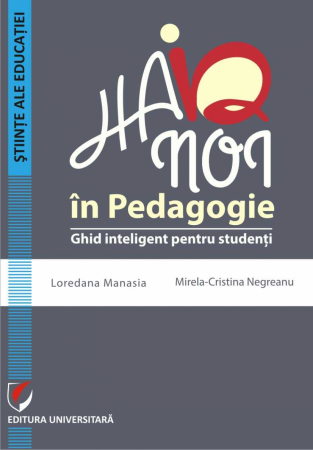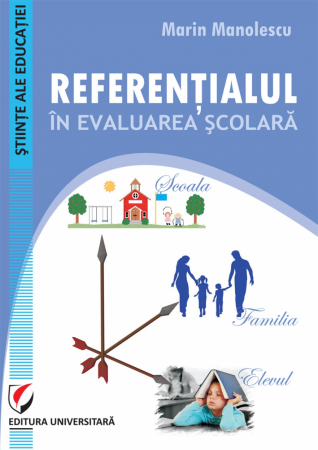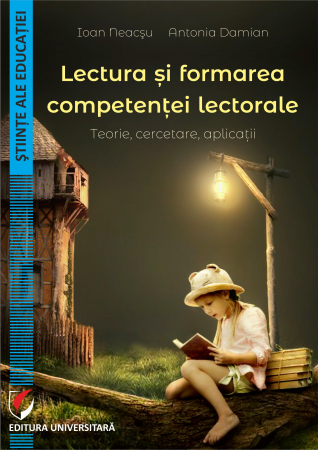Manuscript proposals: info@editurauniversitara.ro / 0745 204 115 //// Tracking orders Individuals / Sales:0745 200 718 / 0745 200 357 Orders Legal entities: 0721 722 783
Publisher: Editura Universitara
Author: Oana Mihaela Drăgolici
Edition: I
Pages: 196
Publisher year: 2022
ISBN: 978-606-28-1547-9
DOI: https://doi.org/10.5682/9786062815479
Product Code:
9786062815479
Do you need help?
0745 200 718
/
0745 200 357
- Description
- Download (1)
- Authors
- Content
- More details
- Reviews (0)
The problem of intercultural education, a component of the current educational system, becomes a special importance in the current society. The migration of the peoples, the economic crisis and other factors of economic and political sources have determined the inclusion of intercultural education on the EU agenda, in general, and of the Member States, in particular. In this context, the institutional framework of the school is facing difficulties related to the integration of children belonging to the ethnic communities, generated, on the one hand, the reluctance to change of the peoples, and on the other, the lack of pragmatic approaches for inclusion of this categories of children.
Thus, the school becomes a true laboratory in which the effects of diversity on the relationships between students and minority students, respectively parents and minority students are experienced. We must understand the diversity as a feature of today's society, a mutual benefit for us all. From this perspective, the key concepts of today's society: interculturality, multiculturality and, implicitly, culture and diversity, break over the school, the main means of mediation between minority and majority, promoting the opening to a tolerant society.
The inclusion of children belonging to ethnic communities in the category of children with a high risk of vulnerability, according to international reference documents in the field (detailed in the work), causes changes in the plan of implementing educational policies. Moreover, the accession of our country to the EU, respectively the signing of international documents in the educational and social field, requires as a priority an educational system focused on competence and respect, capable of training teachers for interculturality. In the current historical context, in a society defined by diversity, change and tolerance, in which the national identity represents the stability element of the society, it is necessary to adapt the current educational systems to the ethnic -cultural particularities of the children belonging to the ethnic communities.
The intercultural communities are approached in the specialized literature as "cultural, ethnic, religious groups that are found in a common space and which are in interaction relationships, respecting the traditions and customs transmitted from generation to generation" (L. Ciolan, 2008 , p. 73). Against this background, interculturality exceeds the patterns of a new discourse in contemporary pedagogy, being, in fact, a reflection of reality, generating new challenges in the issue of education. At the same time, it is necessary to analyze the intercultural dimension of social life from the educational perspective, as a tool for "approaching daily life education, by the significant problems of real life" (L. Ciolan, 2008, p. 74).
“As the borders become more confused, and the affirmation of local autonomies, the old forms of national identity must be restructured. The question "Who are we?" It generates confusion, although, asks for a coherent answer […]. A cosmopolitan perspective is the necessary condition for the existence of a multicultural society in the globalizing order ”(A. Giddens, 2001, pp. 141-143)
The intercultural approach starts from the premise that, through education, interculturality represents "the antidote of racism, xenophobia and other forms of exclusion" (P. Pergaux, 1999, p. 125). Also, intercultural education participates in the "collective creation of a space that accepts, inserts and re -elaborates the cultural meanings of the members of the different communities in contact" (L. Ciolan, 2008, p. 74).
Thus, the school becomes a true laboratory in which the effects of diversity on the relationships between students and minority students, respectively parents and minority students are experienced. We must understand the diversity as a feature of today's society, a mutual benefit for us all. From this perspective, the key concepts of today's society: interculturality, multiculturality and, implicitly, culture and diversity, break over the school, the main means of mediation between minority and majority, promoting the opening to a tolerant society.
The inclusion of children belonging to ethnic communities in the category of children with a high risk of vulnerability, according to international reference documents in the field (detailed in the work), causes changes in the plan of implementing educational policies. Moreover, the accession of our country to the EU, respectively the signing of international documents in the educational and social field, requires as a priority an educational system focused on competence and respect, capable of training teachers for interculturality. In the current historical context, in a society defined by diversity, change and tolerance, in which the national identity represents the stability element of the society, it is necessary to adapt the current educational systems to the ethnic -cultural particularities of the children belonging to the ethnic communities.
The intercultural communities are approached in the specialized literature as "cultural, ethnic, religious groups that are found in a common space and which are in interaction relationships, respecting the traditions and customs transmitted from generation to generation" (L. Ciolan, 2008 , p. 73). Against this background, interculturality exceeds the patterns of a new discourse in contemporary pedagogy, being, in fact, a reflection of reality, generating new challenges in the issue of education. At the same time, it is necessary to analyze the intercultural dimension of social life from the educational perspective, as a tool for "approaching daily life education, by the significant problems of real life" (L. Ciolan, 2008, p. 74).
“As the borders become more confused, and the affirmation of local autonomies, the old forms of national identity must be restructured. The question "Who are we?" It generates confusion, although, asks for a coherent answer […]. A cosmopolitan perspective is the necessary condition for the existence of a multicultural society in the globalizing order ”(A. Giddens, 2001, pp. 141-143)
The intercultural approach starts from the premise that, through education, interculturality represents "the antidote of racism, xenophobia and other forms of exclusion" (P. Pergaux, 1999, p. 125). Also, intercultural education participates in the "collective creation of a space that accepts, inserts and re -elaborates the cultural meanings of the members of the different communities in contact" (L. Ciolan, 2008, p. 74).
-
Interculturality and multiculturalism. Interferences in education
Download
OANA MIHAELA DRAGOLICI
Preamble / 9
Chapter 1
Educational policies addressed to children in ethnic communities / 13
1.1. Key concepts: minority and ethnicity / 15
1.2. Educational policies to promote the rights of ethnic minorities / 20
Chapter 2
Intercultural and multicultural education. Conceptual frame and theoretical analyzes / 25
2.1. Conceptual approaches of notions of "inter" and "many" - cultural in education / 27
2.1.1. Intercultural education - theoretical delimitations / 31
2.1.2. Multicultural education - analytical interference / 40
2.2. The principles of education "inter" and "many" culturality the stage of implementation in our country / 46
Chapter 3
School integration of children from ethnic communities / 53
3.1. School integration - approach from the perspective of inclusive education / 55
3.2. The concept of integration - general characteristics / 64
3.3. Segregation vs. Discrimination / 73
3.4. The role of actors involved in integrating children from ethnic communities / 77
Bibliography / 87
Chapter 1
Educational policies addressed to children in ethnic communities / 13
1.1. Key concepts: minority and ethnicity / 15
1.2. Educational policies to promote the rights of ethnic minorities / 20
Chapter 2
Intercultural and multicultural education. Conceptual frame and theoretical analyzes / 25
2.1. Conceptual approaches of notions of "inter" and "many" - cultural in education / 27
2.1.1. Intercultural education - theoretical delimitations / 31
2.1.2. Multicultural education - analytical interference / 40
2.2. The principles of education "inter" and "many" culturality the stage of implementation in our country / 46
Chapter 3
School integration of children from ethnic communities / 53
3.1. School integration - approach from the perspective of inclusive education / 55
3.2. The concept of integration - general characteristics / 64
3.3. Segregation vs. Discrimination / 73
3.4. The role of actors involved in integrating children from ethnic communities / 77
Bibliography / 87
“If we refer to the functions of cultures and civilizations we must find that the main fundamental need to which culture responds is individual and group identity. We are who we are in the language we speak, the historical inheritance, the values, the traditions and the habits we share, through the literary, artistic and philosophical creation in which we have formed. " (M. Malita, 1998, p. 37)
The problem of intercultural education, a component of the current educational system, becomes a special importance in the current society. The migration of the peoples, the economic crisis and other factors of economic and political sources have determined the inclusion of intercultural education on the EU agenda, in general, and of the Member States, in particular. In this context, the institutional framework of the school is facing difficulties related to the integration of children belonging to the ethnic communities, generated, on the one hand, the reluctance to change of the peoples, and on the other, the lack of pragmatic approaches for inclusion of this categories of children.
Thus, the school becomes a true laboratory in which the effects of diversity on the relationships between students and minority students, respectively parents and minority students are experienced. We must understand the diversity as a feature of today's society, a mutual benefit for us all. From this perspective, the key concepts of today's society: interculturality, multiculturality and, implicitly, culture and diversity, break over the school, the main means of mediation between minority and majority, promoting the opening to a tolerant society.
The inclusion of children belonging to ethnic communities in the category of children with a high risk of vulnerability, according to international reference documents in the field (detailed in the work), causes changes in the plan of implementing educational policies. Moreover, the accession of our country to the EU, respectively the signing of international documents in the educational and social field, requires as a priority an educational system focused on competence and respect, capable of training teachers for interculturality. In the current historical context, in a society defined by diversity, change and tolerance, in which the national identity represents the stability element of the society, it is necessary to adapt the current educational systems to the ethnic -cultural particularities of the children belonging to the ethnic communities.
The intercultural communities are approached in the specialized literature as "cultural, ethnic, religious groups that are found in a common space and which are in interaction relationships, respecting the traditions and customs transmitted from generation to generation" (L. Ciolan, 2008 , p. 73). Against this background, interculturality exceeds the patterns of a new discourse in contemporary pedagogy, being, in fact, a reflection of reality, generating new challenges in the issue of education. At the same time, it is necessary to analyze the intercultural dimension of social life from the educational perspective, as a tool for "approaching daily life education, by the significant problems of real life" (L. Ciolan, 2008, p. 74).
“As the borders become more confused, and the affirmation of local autonomies, the old forms of national identity must be restructured. The question "Who are we?" It generates confusion, although, asks for a coherent answer […]. A cosmopolitan perspective is the necessary condition for the existence of a multicultural society in the globalizing order ”(A. Giddens, 2001, pp. 141-143)
The intercultural approach starts from the premise that, through education, interculturality represents "the antidote of racism, xenophobia and other forms of exclusion" (P. Pergaux, 1999, p. 125). Also, intercultural education participates in the "collective creation of a space that accepts, inserts and re -elaborates the cultural meanings of the members of the different communities in contact" (L. Ciolan, 2008, p. 74).
The concerns that have in mind the analysis of the process of integrating children belonging to the ethnic communities are current, representing the object of study for several researchers. Of the authors who bent on the concepts of interculturality, multiculturality and school integration of this category of children, we mention: Vaideanu G., C. Cucos, A. Nedelcu, L. Ciolan, C. Cace, S.A., authors who appreciate that Intercultural education represents another stage in pedagogy, which places the student and his needs in the center of the educational process. Also, several non -governmental organizations (saved children, unicef, etc.) have initiated research in this field, studies that have highlighted the importance that has inter and multicultural education, on the one hand and school integration, on the other.
The adaptation of the educational systems to the demands of the democratic society represents a feature of the current pedagogy, becoming necessary to adapt the school according to the needs of this category of students, in order to meet some current principles: "integrated education" and a "school for all".
Thus, we can say that the initiation of a scientific approach to deepen the process of integrating children belonging to the ethnic communities in the Romanian education system has a topical character, arising, first of all, from the need to form the teachers for Inter and multiculturality.
The present study addresses a topical theme, mainly focused on identifying the problems with which the school, in general, and teachers, in particular, are facing the integration of minority children. The main objective of the work considered the elaboration of recommendations for teachers to help them in adapting educational systems to the ethnic particularities of this category of children.
“The intercultural approach in education is a new way of conception and implementation of school curriculum and a new relational attitude between teachers, students, parents. The intercultural perspective opens new tracks of manifestation of diversity and differences. "(C. Cucos, 2000, p. 183)
The problem of intercultural education, a component of the current educational system, becomes a special importance in the current society. The migration of the peoples, the economic crisis and other factors of economic and political sources have determined the inclusion of intercultural education on the EU agenda, in general, and of the Member States, in particular. In this context, the institutional framework of the school is facing difficulties related to the integration of children belonging to the ethnic communities, generated, on the one hand, the reluctance to change of the peoples, and on the other, the lack of pragmatic approaches for inclusion of this categories of children.
Thus, the school becomes a true laboratory in which the effects of diversity on the relationships between students and minority students, respectively parents and minority students are experienced. We must understand the diversity as a feature of today's society, a mutual benefit for us all. From this perspective, the key concepts of today's society: interculturality, multiculturality and, implicitly, culture and diversity, break over the school, the main means of mediation between minority and majority, promoting the opening to a tolerant society.
The inclusion of children belonging to ethnic communities in the category of children with a high risk of vulnerability, according to international reference documents in the field (detailed in the work), causes changes in the plan of implementing educational policies. Moreover, the accession of our country to the EU, respectively the signing of international documents in the educational and social field, requires as a priority an educational system focused on competence and respect, capable of training teachers for interculturality. In the current historical context, in a society defined by diversity, change and tolerance, in which the national identity represents the stability element of the society, it is necessary to adapt the current educational systems to the ethnic -cultural particularities of the children belonging to the ethnic communities.
The intercultural communities are approached in the specialized literature as "cultural, ethnic, religious groups that are found in a common space and which are in interaction relationships, respecting the traditions and customs transmitted from generation to generation" (L. Ciolan, 2008 , p. 73). Against this background, interculturality exceeds the patterns of a new discourse in contemporary pedagogy, being, in fact, a reflection of reality, generating new challenges in the issue of education. At the same time, it is necessary to analyze the intercultural dimension of social life from the educational perspective, as a tool for "approaching daily life education, by the significant problems of real life" (L. Ciolan, 2008, p. 74).
“As the borders become more confused, and the affirmation of local autonomies, the old forms of national identity must be restructured. The question "Who are we?" It generates confusion, although, asks for a coherent answer […]. A cosmopolitan perspective is the necessary condition for the existence of a multicultural society in the globalizing order ”(A. Giddens, 2001, pp. 141-143)
The intercultural approach starts from the premise that, through education, interculturality represents "the antidote of racism, xenophobia and other forms of exclusion" (P. Pergaux, 1999, p. 125). Also, intercultural education participates in the "collective creation of a space that accepts, inserts and re -elaborates the cultural meanings of the members of the different communities in contact" (L. Ciolan, 2008, p. 74).
The concerns that have in mind the analysis of the process of integrating children belonging to the ethnic communities are current, representing the object of study for several researchers. Of the authors who bent on the concepts of interculturality, multiculturality and school integration of this category of children, we mention: Vaideanu G., C. Cucos, A. Nedelcu, L. Ciolan, C. Cace, S.A., authors who appreciate that Intercultural education represents another stage in pedagogy, which places the student and his needs in the center of the educational process. Also, several non -governmental organizations (saved children, unicef, etc.) have initiated research in this field, studies that have highlighted the importance that has inter and multicultural education, on the one hand and school integration, on the other.
The adaptation of the educational systems to the demands of the democratic society represents a feature of the current pedagogy, becoming necessary to adapt the school according to the needs of this category of students, in order to meet some current principles: "integrated education" and a "school for all".
Thus, we can say that the initiation of a scientific approach to deepen the process of integrating children belonging to the ethnic communities in the Romanian education system has a topical character, arising, first of all, from the need to form the teachers for Inter and multiculturality.
The present study addresses a topical theme, mainly focused on identifying the problems with which the school, in general, and teachers, in particular, are facing the integration of minority children. The main objective of the work considered the elaboration of recommendations for teachers to help them in adapting educational systems to the ethnic particularities of this category of children.
“The intercultural approach in education is a new way of conception and implementation of school curriculum and a new relational attitude between teachers, students, parents. The intercultural perspective opens new tracks of manifestation of diversity and differences. "(C. Cucos, 2000, p. 183)
If you want to express your opinion about this product you can add a review.
write a review
Customer Support Monday - Friday, between 8.00 - 16.00
0745 200 718 0745 200 357 comenzi@editurauniversitara.ro
6359.png)
![Interculturality and multiculturalism. Interferences in education - Oana Mihaela Dragolici [1] Interculturality and multiculturalism. Interferences in education - Oana Mihaela Dragolici [1]](https://gomagcdn.ro/domains/editurauniversitara.ro/files/product/large/interculturalitate-si-multiculturalitate-interferente-in-educatie-070939.jpg)
